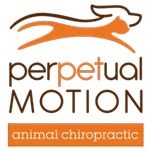Allergies and asthma are big business. Approximately 50 million Americans suffer from allergies, and approximately 20 million suffer from asthma. With some overlap between the conditions, more than 60 million Americans experience either allergies, asthma, or both.
The costs for medications, hospital and emergency room admissions, and loss of business productivity are huge - approximately $18 billion annually.1 And, the impact on children is significant and ongoing - 14 million school days are missed annually due to allergies and asthma. These disorders are the number one reason for school absenteeism.2
Standard treatment for allergies and asthma consists of a variety of medications, and if you have one of these disorders, you know all about the meds. For allergies, typical medications include antihistamines and corticosteroid nasal sprays. You may also undergo more aggressive therapy - desensitization injections, known as immunotherapy, which are given regularly over a period of years.
For asthma, the gold standard of medication is inhaled corticosteroids. Asthma inhalers are now so much a part of daily life that they appear regularly as props on television serials and in film. In plot-driven, contrived "difficult" moments, lead actors - children and adults - pull out their inhalers and take a quick dose.
The challenge, of course, with allergy and asthma medication is there is no end-point. There is no cure. Asthma and allergies, for the most part, are lifelong conditions requiring lifelong medication. Might there be a better way, an alternative solution?
"Alternative" is the key word. Medical treatment is designed to combat symptoms, and is successful to a certain extent with allergies and asthma. Underlying causes are not addressed, however, and symptoms continue year after year. What else might be done?
Enter chiropractic care. Chiropractic health care, with its unique comprehensive approach, is able to offer positive benefit to a variety of conditions and ailments. In the case of allergies and asthma, these "hypersensitivity conditions" may respond well to therapy designed to normalize the body's flow of nerve signals. To use a metaphor, chiropractic treatment removes roadblocks to the body's natural healing abilities. Restoring these imbalances may help reduce such hypersensitivity reactions.
Chiropractic care frequently includes nutritional counseling, a critical component for people with allergies and asthma. Such individuals need as much physical optimization as possible, and nutritional awareness is key. A balanced food plan will help support all metabolic systems, reduce irritation caused by deficiencies, and provide fuel for exercise programs.
The benefits of chiropractic care are wide-ranging, and may be very useful in cases of hypersensitivity disorders such as allergies and asthma.
1Weiss K: The costs of asthma. Asthma and Allergy Foundation, 1998 [updated 2001].
2The Condition of Education, National Center for Education Statistics, 2001.
Allergies and Asthma
- Created in Newsletter Library, Chronic Conditions
